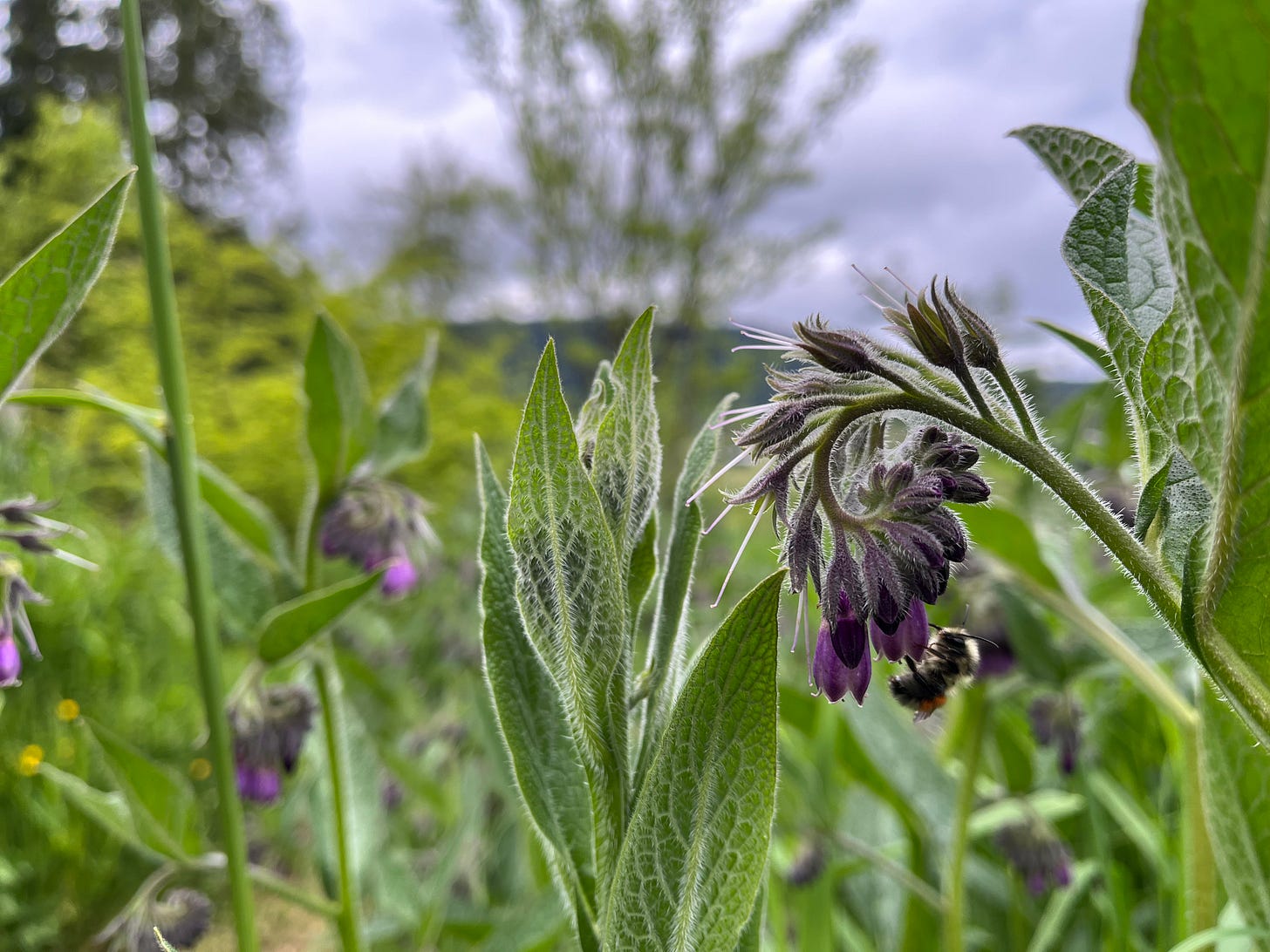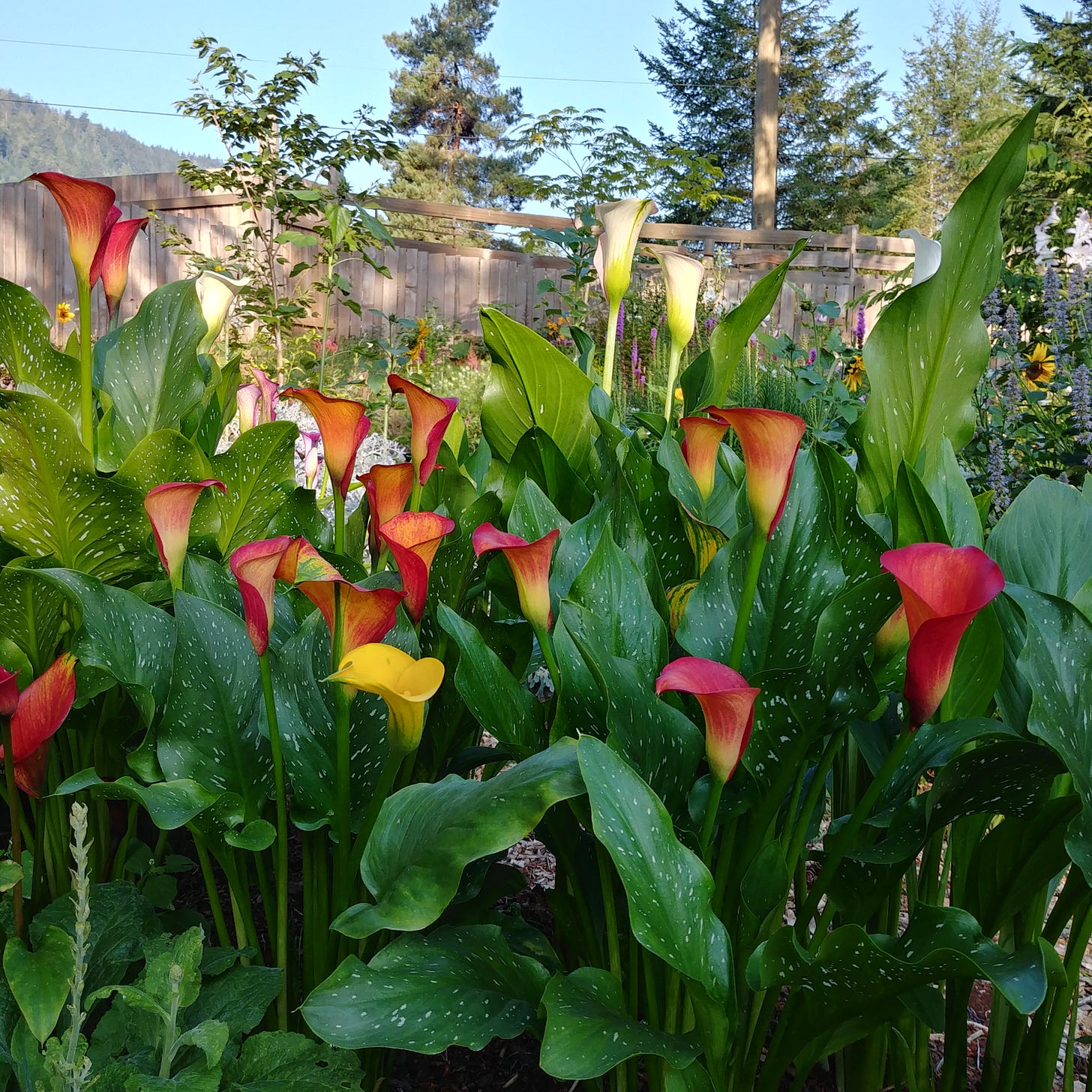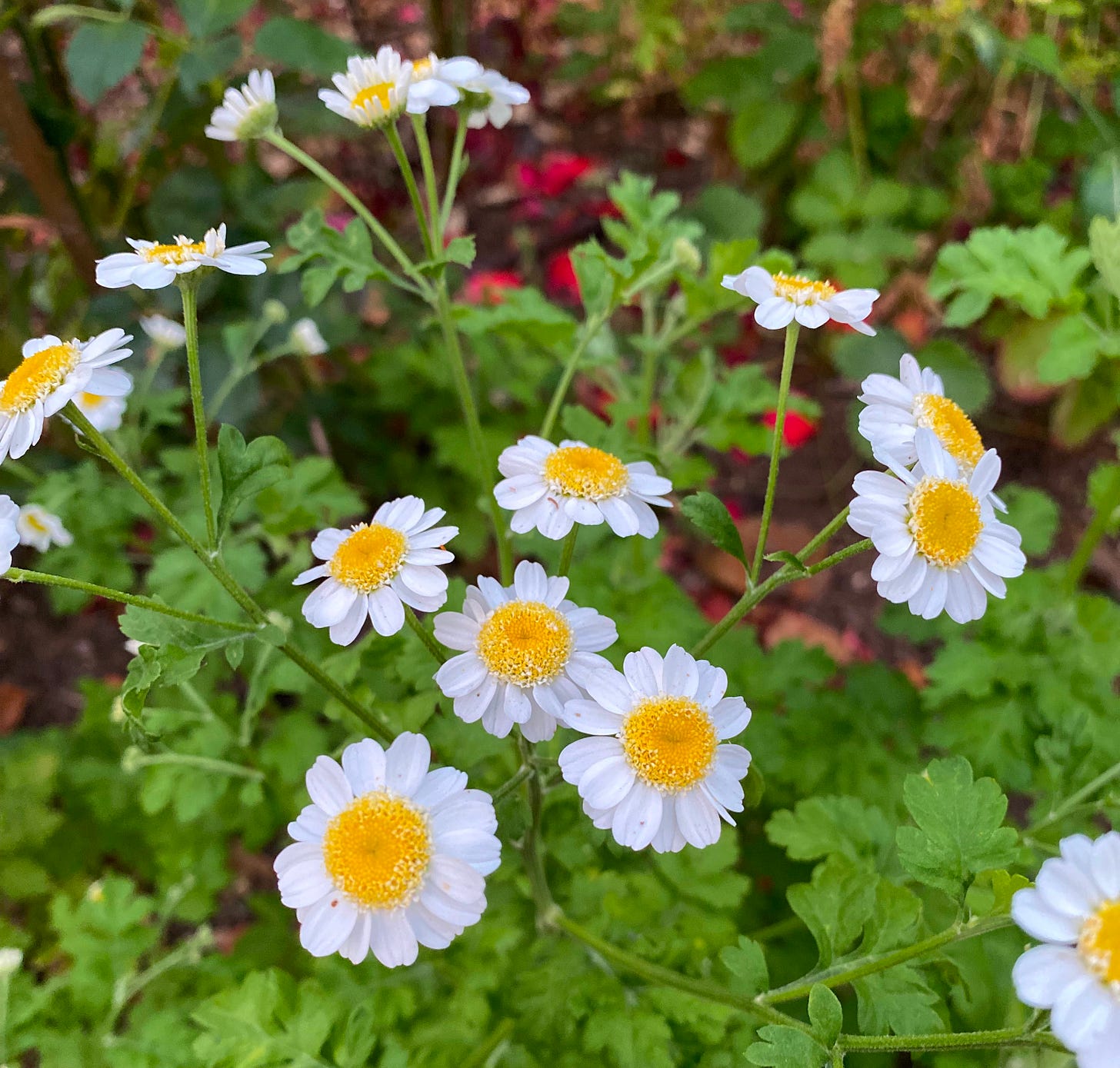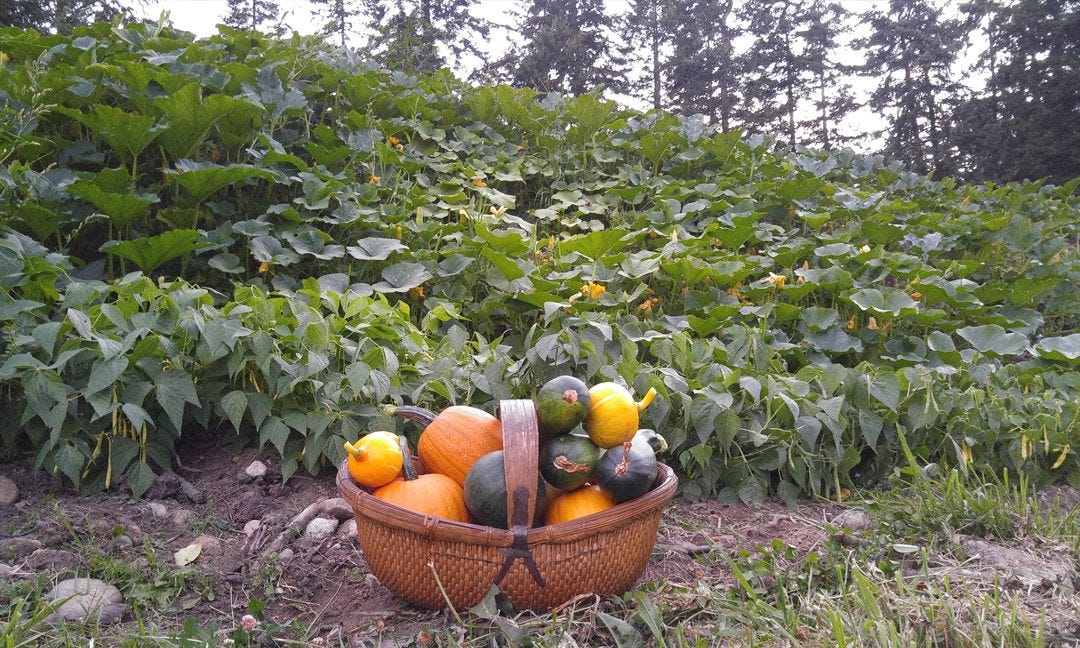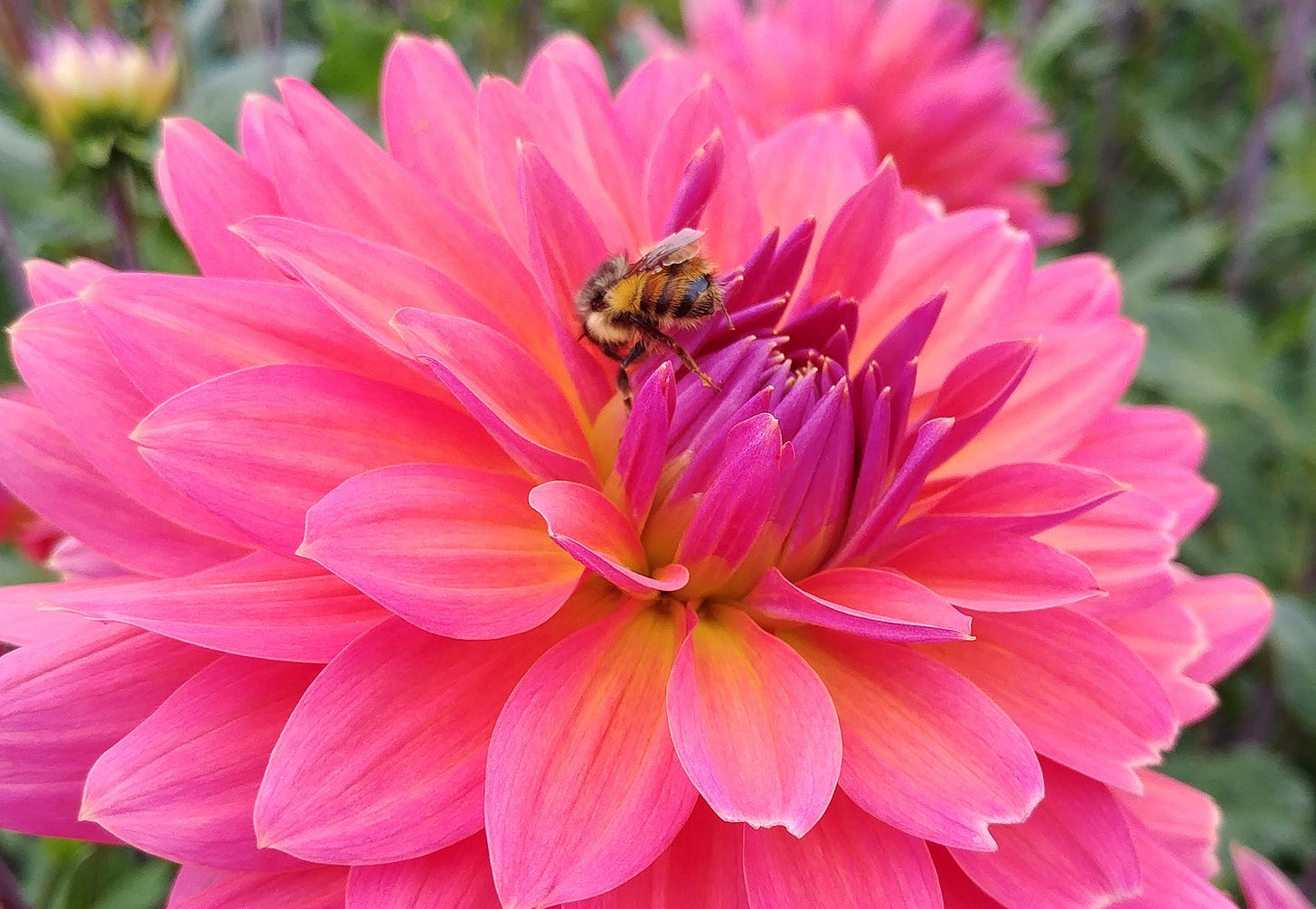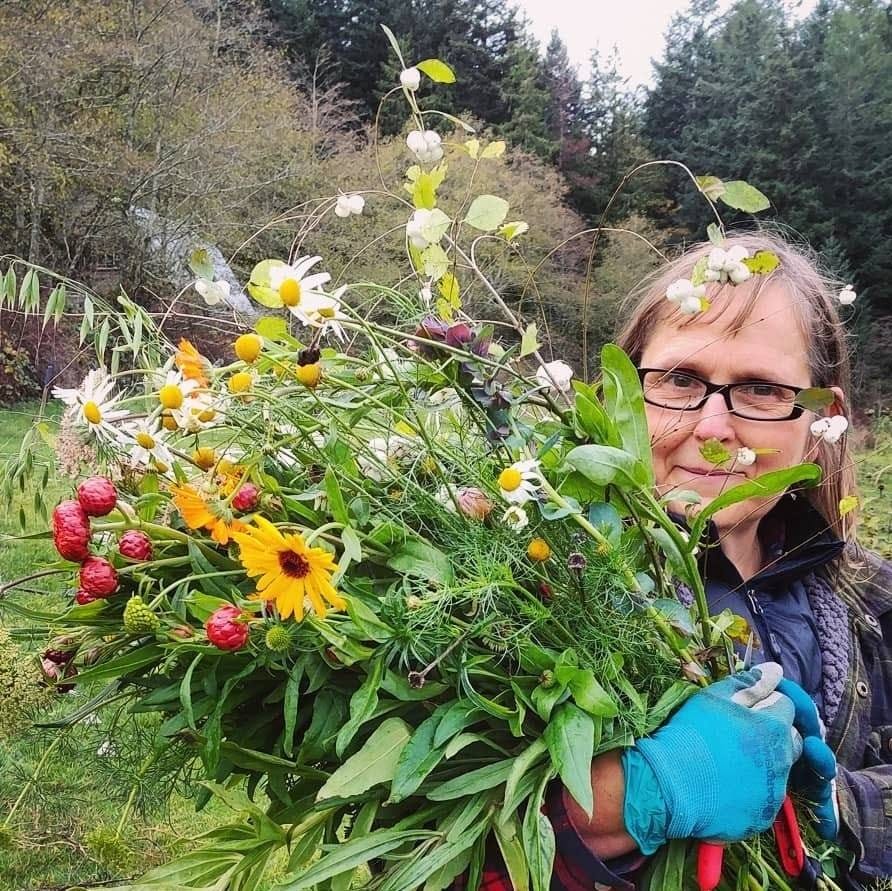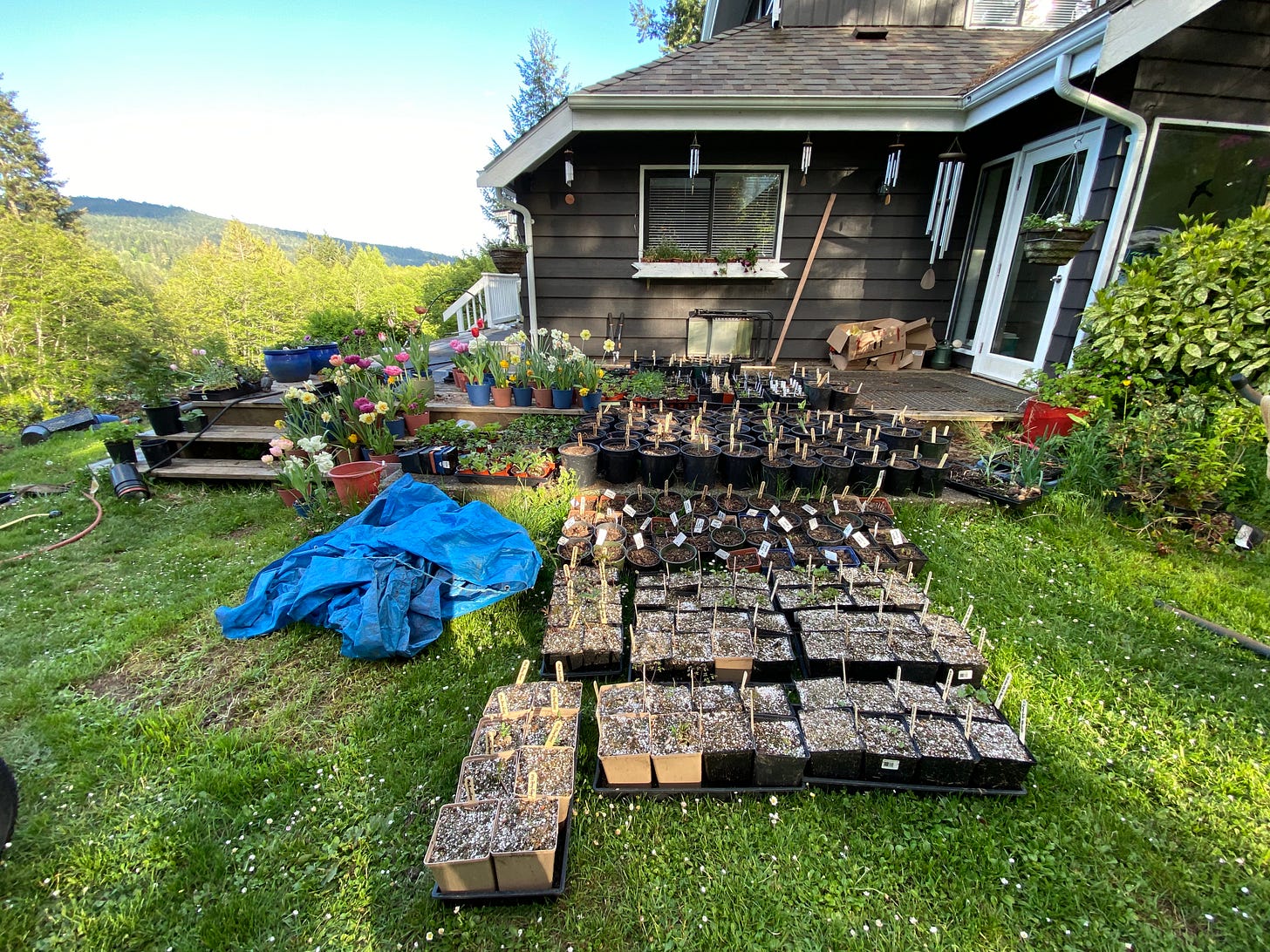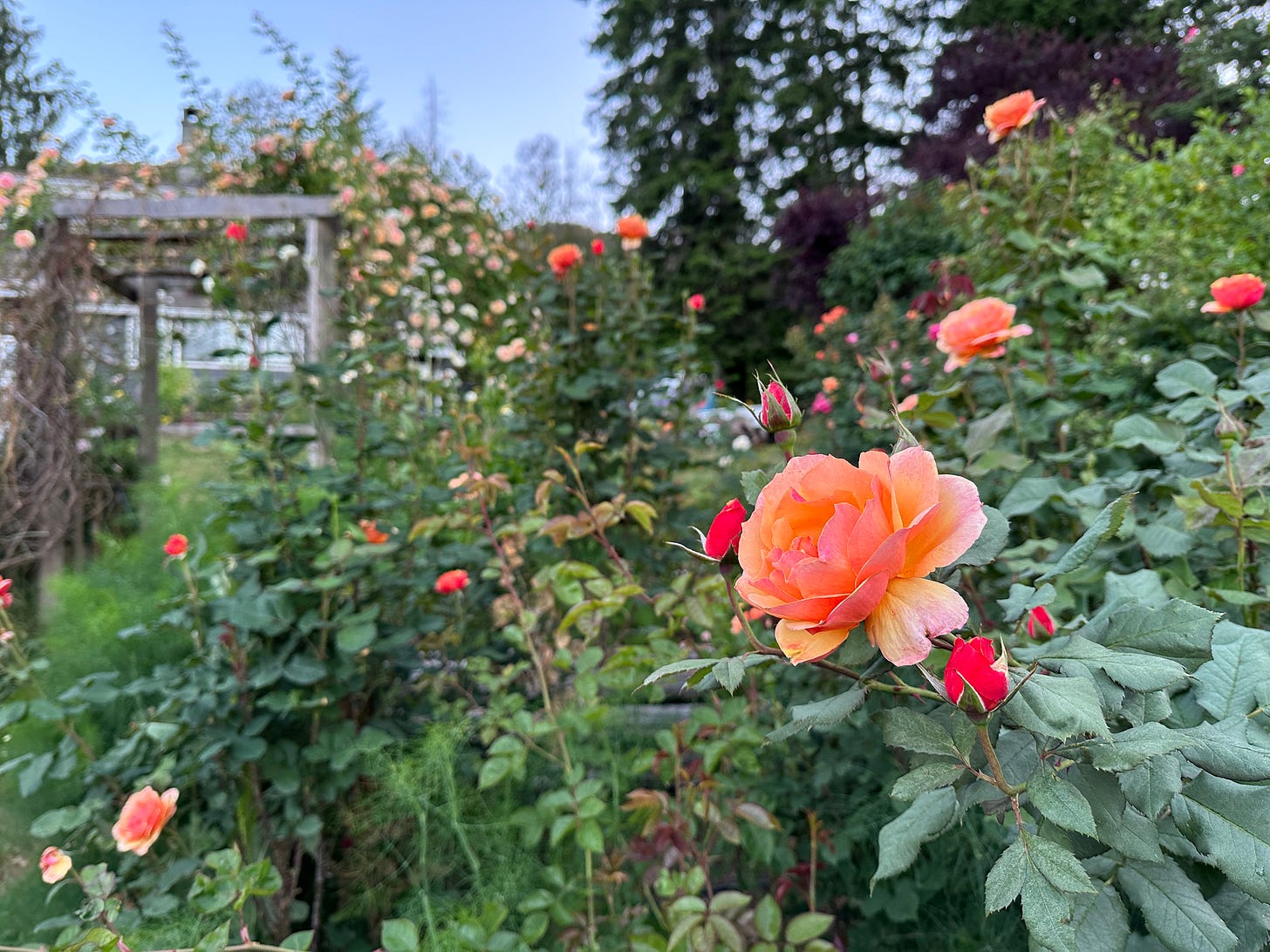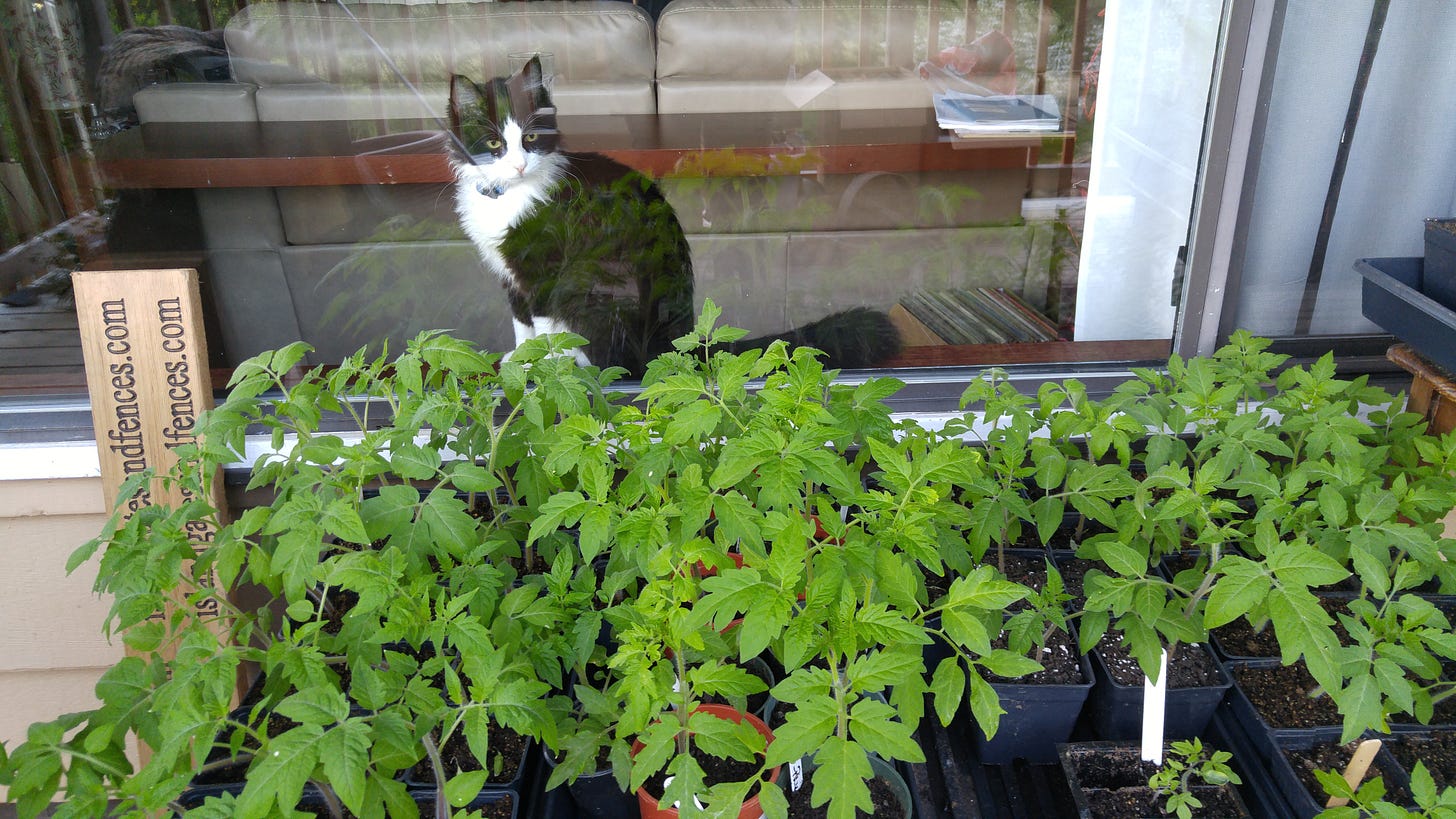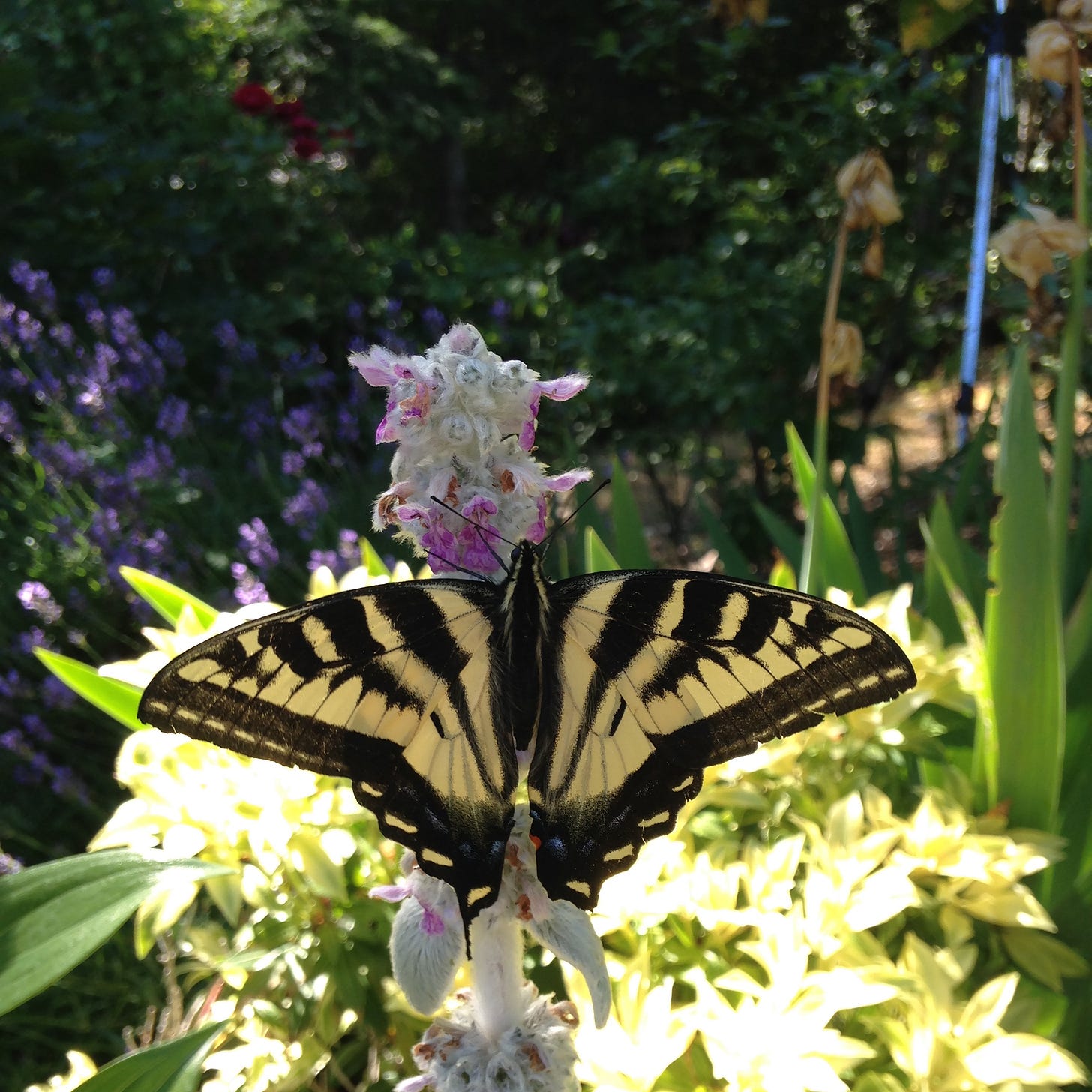How Flowers and Pollinators Hold the Key to Our Future
Explore the ancient connection between plants, pollinators, and humanity—and how your garden can be part of a global solution.
The Magic of Seeds
The desiccated petals drop to the table, soft sighs falling, gossamer and delicate. Seeds drop, gifts from once-upon-summer blooms. The seed pod is beautiful in its mathematical precision. A fibonacci spiral radiates outwards from the centre. It’s as if the bees have traced their dance steps and transferred them down through the petals, etching the memory of their steps across the bloom, hidden deep inside the flower.
Flowers belong to the angiosperm family: plants that produce fruit containing seeds. Without them there would be no major crop foods: grains, fruit, vegetables, herbal medicines the precursors of pharmaceutical drugs. Not to mention the role plants serve as carbon sinks removing carbon dioxide from the air and storing it in the earth.
We cannot survive without flowers. We would not be here if it weren’t for flowers arriving on the scene 130 million years ago. That’s a blink of an eye in terms of the geological age of the Earth. If you squeezed all of Earth’s time into hours you’d find that flowers have only existed for a mere 90 seconds!
Flowers are the Heart of Nature
We use flowers as messengers to convey our feelings of love, sorrow and happiness to loved ones, but our relationship to flowers and their symbolic use is far older.
Evidence of flowers being used as early as 50,000 years ago were unearthed by researchers working in the 1970s at a Neandertal burial cave in northern Iraq. During their dig they theorized that based on the pollen found in the cave that it had at one time been decorated with flowers. (That theory has been challenged as there is a possibility that the pollen was brought in by animals.)
Archaeologists in 2005 discovered that early humans did definitively bury their dead in beds of flowers beginning about 13,700 years ago in what is now Israel.
The history of human’s use of medicinal plants predates our written history.
Archaeological evidence has been found of medicinal plants, like opium poppies and cannabis, in cave dwellings from 60,000 years ago.
Various healing systems based on plants, like Ayruvedic and Chinese medicine, are thousands of years old. The ancient Greeks provided the basis for contemporary Western medicine through their research of herbal medicine shared through the teachings of Hippocratres, Galen, Diocese of Crystus, Pliny and Dioscordes.
The Middle Ages saw texts, Materia Medica, being written on the healing power of medicinal herbs and plants.
The wisdom of plants is written in our very DNA, a story passed down through millennia like whispers from our ancestors. Every seed we plant is a thread in that ancient tapestry, reconnecting us to the Earth and to each other.
Medicinal and healing flowers have communicated with medicine carriers and healers since time immemorial. The messages were relayed through dreams and visions and many times in response to the need of the healer searching for a remedy. We have receptors in our DNA for specific healing plants and flowers. These genetic memories create a bridge, a link, to our deep ancestral knowledge. Think of how amazing that truly is!
Imagine a medicine person walking across a meadow in a dream state communicating with plants searching for a remedy for one of your ailing and very distant relatives. A plant hears the call providing medicine—that answer resides in your DNA, passed along through thousands of years, like an invisible thread anchoring to your deep ancestors. Anchoring you to the Earth, to Nature, to the world of plants and magic.
Flowers Bring All Life Into Being
Nearly all of the food we eat, that our pets, livestock and wild animal brothers and sisters eat, begins with flowers pollinated by bees, butterflies and other pollinators. This pollinator dance interwoven around the world has continued for millennia.
The intricate system of Nature is being threatened as never before. In our lifetime we are seeing the catastrophic decline of bees and pollinators as well as many plant and animal species.
Since early 2008 honeybees worldwide have suffered from colony collapse disorder dying by the hundreds of thousands, but the larger threat is to our wild bees, flies, bats, butterflies, moths and others. They are all essential for our ecosystem to continue functioning.
Wild bee species are vanishing at an unprecedented rate—one in six is now threatened with extinction, according to a study by the Center for Pollinator Research. Their decline has been attributed to climate change, habitat loss and the use of pesticides to grow food and flowers.
We are living through Earth’s Sixth Mass Extinction, the first since the ice age 10,000 years ago. We have forgotten our place in the rhythm of the natural world. Lost our connections to place, to the truth that we do not survive without bees, pollinators, flowers and Nature.
How do we heal the deep rift that has alienated us from the world that we cannot live without?
The first step is in understanding how we can help to bring change in our own immediate homes and yards. For truly if each of us joins one and other together we can create miracles and possibly even save the world.
The Pollinator Crisis
As the climate of the Earth changes, bees and pollinators are under increasing threats from urbanization and development, heavy chemical and neonicotinoid pesticide use and shifting weather patterns that create increased temperatures, droughts, fires, floods and hurricanes—all contributing to habitat loss.
While most of us are aware of honeybees being decimated by colony collapse disorder, many of us are not aware that native wild bees are also in peril globally. Honeybees have humans managing and caring for them while wild bees are left to fend for themselves. Many wild bee species are facing extinction along with butterflies, moths, birds, frogs, toads, snakes and more.
Bees, both wild and honeybees, pollinate 90% of our food worldwide. If bees disappear completely, human beings will ultimately follow. I don’t know about you but that seems absolutely daunting and simply overwhelming to comprehend. What can we do? What can you do?
My Journey: From Art to Action
As an environmental artist and educator, I felt completely at a loss on how to contribute to saving bees when I first heard about colony collapse disorder. Suddenly, creating eco art seemed like an abstract way of approaching an alarming and very real issue. I realized that creating artwork was not the answer; I wanted to do something tangible that would really make a difference.
So, in 2015, my husband and I bought a run-down farm on Salt Spring Island and I began to grow flowers for bees. We had no experience in farming, we had no plan, just a deep calling to do something to create change, even if it was just in our small corner of the Earth.
As our first tiny gardens have expanded with each year, we have become the stewards of a flower, bee and pollinator haven that is also home to many different kinds of butterflies, moths, insects, birds, frogs, toads, snakes and small mammals.
As I learned to grow hundreds of different kinds of flowers, and while studying to become a Master Organic Gardener, I felt an increasing urgency to share my knowledge. After all, I had witnessed our farm transform and become a magical place buzzing with flying creatures and humming with other earthbound critters.
Because of my background as an environmental artist and educator, I have always believed that healing the Earth begins with one person at a time, joining others to create a network of awareness and healing.
So, I began to host workshops and leading tours through our flower farm. I shared the importance of growing flowers for bees for habitat. I also shared why it’s important to buy locally grown flowers instead of conventional ones that are grown thousands of miles away—many of which are filled with pesticides and chemicals.
As I shared flower growing and seed harvesting tips, many people asked me how they could grow a bee garden like ours. Most believed they couldn’t because they live in the city, but I knew that wasn’t true.
As I pondered their questions during quiet moments working alone amongst the flowers, I began to imagine what it would be like if everyone planted a bee garden and added their unique floral thread to a garden of global healing that we create together. I knew that I could help people learn how to grow bee gardens.
The deeper beauty and bonus of growing a bee pollinator garden is you’re not only providing habitat for bees and pollinators, but your bee garden is also sequestering carbon! All plants absorb carbon dioxide from the air and store it in the soil.
Almost all carbon in the atmosphere passes through plants during photosynthesis, a process that turns sunlight, carbon, and water into sugars and carbohydrates. The plant roots release this carbon-rich sugar into the soil as nutrients. And during their lifetime, plants create oxygen! Nature is truly the master of the most amazing and delicate systems.
According to the book, Carbon Farming Solutions just 1/10 of an acre of plants can offset carbon for one year for one adult! That’s a patch 50’ x 94’ or 4700 square feet. Not all of us have that much space to dedicate to growing a garden, especially if we live in apartments in the city. Cities are one of the most important places to grow flowers for bees and pollinators who have suffered a nearly complete loss of natural habitat.
Also, cities produce a lot of carbon dioxide, so your city garden can help to clean the air as well as feed bees and pollinators and provide you with beautiful flowers to enjoy!
Bee gardens filled with flowers, herbs, and flowering vegetables can be planted on rooftop decks, balconies, sundecks, terraces, along sidewalks, in planters, in empty fields and lots, in yards, in suburbs, and in the country—turn lawns into wildflower havens!
A bee garden can be planted almost anywhere there is soil, water, and sunlight—and there are flowers and plants that love the shade and partial sun as well.
A typical apartment balcony is about 4’x10’. That might seem small but by using railing planters, hanging baskets and pots on the deck surface it’s possible to plant approximately 47 square feet of garden that will feed bees, provide beauty and a connection to nature, plus sequester 1/100 of an acre of carbon.
That may not seem like a lot but imagine if everyone in your apartment building, or your city block, planted a similar garden. And then multiply that by many more blocks, neighbourhoods, cities, provinces, states and countries and suddenly you have a mosaic of healing that truly can create change for the Earth and all her Beings.
Best of all, you will reconnect to Nature through the absolute magic of planting seeds and watching them bloom into the most beautiful and amazing flowers and food for you and the bees and pollinators.
You Can Make a Difference!
Yes, you can make a difference right from your own home! Even planting a small garden in pots on your balcony will make a difference—especially if thousands of us join together in planting for the bees, for pollinators, for the future.
Urban areas can support up to 50% more pollinators when gardens and green spaces are designed with native plants and flowers.
The Importance of Organic Seeds and Seedlings
If you decide to grow a bee garden, and you’re buying your plant seedlings from big box stores it’s important to ask them where the plants are from and how they were grown. Many of these plant starts are commercially grown from seeds treated with neonicotinoids, an insecticide.
Neonicotinoids are systemic, meaning they will be in all parts of the plant from roots to leaves to blooms, and will continue to affect the plant for its entire life and may also remain in the soil. The nectar and pollen from these plants can kill pollinators outright, or damage their immune systems and mess up their navigational abilities, they can also sicken the hive once the nectar and pollen are carried to it.
Seeds from plants treated with neonicotinoids also kill birds that eat them. The best way to start plants is to buy organically grown seeds and start them yourself or buy plant starts from someone that doesn’t use harmful chemicals. Visit your local farmer’s market or ask your garden center to bring in organic plants and seeds.
Additionally, you should never use herbicides in your garden. These herbicides have been used to kill weeds, but weeds are really just plants growing in the ‘wrong’ place.
These herbicides kill pollinators, birds and can also harm you. There are other methods to take care of plants you don’t want growing in certain areas.
Better yet, let the dandelions grow in your lawn—bees and pollinators love them, and they are delicious in a salad!
Here’s How You Can Help Pollinators Thrive:
Plant flowers that attract bees and butterflies, like lavender, sunflowers, and wildflowers.
Avoid pesticides and herbicides, especially neonicotinoids.
Buy organic seeds or starts from local growers.
Let “weeds” like dandelions and clover bloom—they’re vital food sources for bees.
Advocate for green spaces in your community.
Every flower begins with a seed, and every garden begins with a choice. Together, we can weave a global tapestry of pollinator havens—balconies, yards, and fields blooming with hope and renewal. Let’s sow the seeds of change and grow a better future, one flower at a time.
Join the Movement: Learn to Grow for Pollinators
If this article has inspired you to grow a bee garden, I invite you to join my Alchemy Farm Masterclass: 12 Bee-Loved Flowers. In this mini-workshop, free for paying subscribers, you’ll discover which flowers pollinators love most, along with expert tips for growing them successfully. Together, we’ll plant the seeds for a better future—for bees, for the Earth, and for us all.



